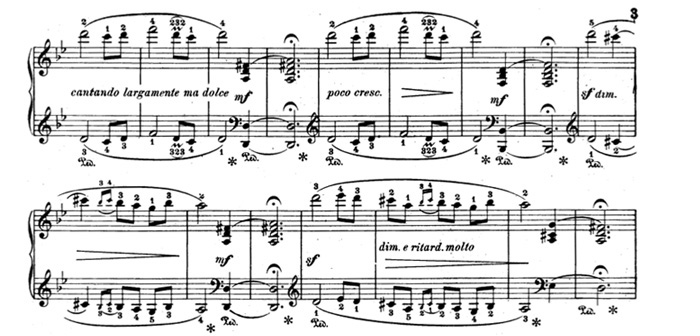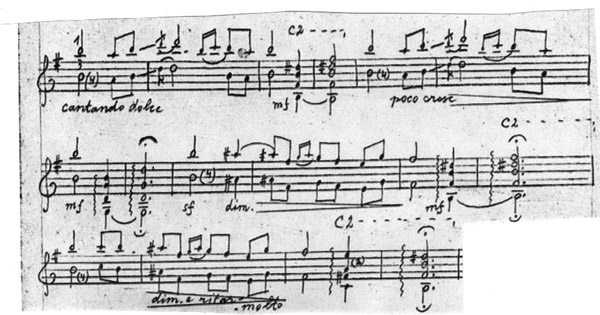Now let’s look at the lyrical middle section. In contrast to the opening section, this section evokes cante jondo through the use of the phrygian mode (D phrygian), ornamentation and the use of augmented 2nd intervals. The melody is doubled at the 15th, and each section of melody is briefly answered with chords in the same manner as a guitarist will answer each section of singing in many forms of cante de Levante.

It really surprises me that all four of the transcriptions I’ve been looking at (Fortea, Prat, Segovia and Yates) double the melody at the octave rather than the 15th – double octaves are quite manageable on the guitar by playing at the same fret on both E strings. The only guitar versions I’ve heard with the 15th intact are Yepes (some live versions) and David Russell (briefly, right at the end of the middle section).

Segovia changes the augmented 2nds in bars 72 and 76 to major 2nds. This is more in line with the Western European tradition, but overly softens the exotic sound of the melody. Yates has pointed out that in the earliest editions of the piece, the augmented 2nd ornaments in bars 72 and 76 were written out in full, leaving little doubt of Albeniz’s intentions. Later editions had the ornament changed to a major 2nd – we can speculate that this may have sounded more correct to an editor accustomed to classical music conventions.
Yates not only restores the augmented 2nd missing from Segovia’s transcription, but further accentuates them with cross-string ornaments. This is a departure from the rest of Yates’ transcription, in that he is using a guitaristic effect, not following the piano original but following the mood he presumably believed Albeniz intended.

